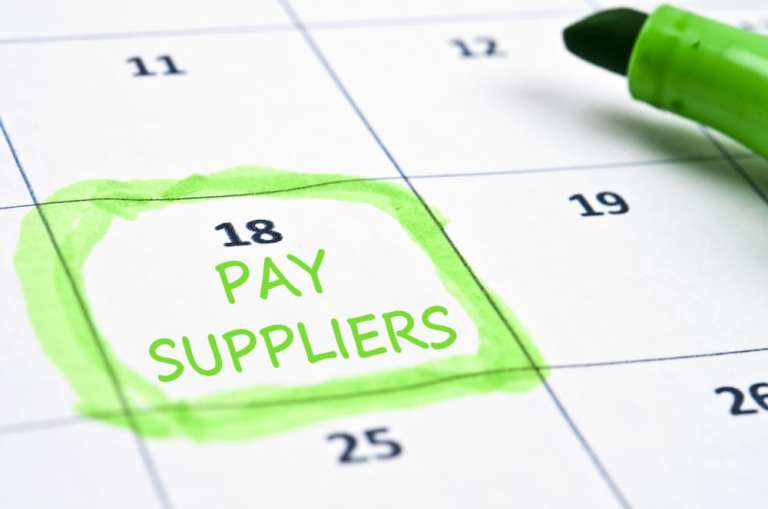Billtrust Adds ACH, Wire Support To Business Payments Network

When B2B order-to-cash technology provider Billtrust announced the launch of its Business Payments Network (BPN) in late-2018, it was a solution designed to tackle one of the largest hurdles in B2B payments that remains today: managing all of the data and workflows required to achieve transaction success.
A collaboration with Visa, Billtrust’s BPN tackles that friction on both sides of the B2B equation. For corporate buyers, the BPN allows businesses to know their vendors’ preferred digital payment methods and initiate a payment without having to manually enter in troves of data like email addresses or remittance information. For suppliers, it allows for an integrated way to accept digital payments, again without the friction of manually retrieving payment information and moving into their back-end systems.
The solution was an important step in helping businesses embrace digital B2B payments, particularly when it comes to adoption of virtual and physical commercial cards.
On Monday (Aug. 10), Billtrust is rolling out an expansion of its BPN via the debut of BPN 3.0, adding support for ACH and wire transactions.
In an announcement sent to PYMNTS, Billtrust said these enhancements take yet another swing at the friction of paper checks, with Billtrust Founder and CEO Flint Lane stating the need to digitize B2B payment flows without adding extra work for either buyer or supplier.
“Digital payments from buyers can often lead to more manual work for suppliers, whether it be extracting payment details from emails and web portals or reconciling potentially hundreds or thousands of settlements that do not carry remittance information,” he said. “The organizations partnering with Billtrust and Visa that are taking advantage of BPN are truly making digital payments touchless for both buyers and suppliers.”
Mixing Payment Rails
With paper checks still so rampant in accounts payable (AP) and accounts receivable (AR) departments, the B2B payments landscape continues to face an uphill battle to digitize and automate.
As Lane told Karen Webster in an interview when BPN first launched in 2018, one of the biggest reasons why paper checks persist in AP departments is because, for all of their drawbacks, checks do not require much work on the buyer side in terms of data.
While a card or ACH transaction traditionally mean manual data collection and entry around everything from vendor email addresses to bank account numbers to remittance information, paper checks only need the mailing address of the recipient.
“That is why we are swimming in paper in 2018 because no one has solved that last-mile problem for the delivery of payments to the supplier,” he said at the time.
BPN addressed that pain point with commercial cards as key players like Visa and J.P. Morgan embraced the network for their commercial cardholders.
While physical and virtual commercial card transaction volume is on the rise, both buyers and suppliers still need choice in payment methods, particularly as AP and AR professionals continue to work remotely.
“In this new normal of accounts receivable and accounts payable teams initiating and accepting payments from the comfort of their homes, paper checks simply do not fit into this environment,” Billtrust’s Lane noted in Monday’s announcement, which highlighted the ability for BPN to now automate and integrate the movement of transaction data along with funds between buyer and supplier whether payments are made via card, ACH or wire.
A Growing Ecosystem
With added support for more payment methods, the Business Payment Network is also expanding its reach to more buyers and suppliers. Billtrust also announced Monday that the BPN has seen a 118 percent increase in transaction volume in the first half of this year compared to the same period of 2019.
Partnerships have been key to that growth, Billtrust said, pointing to Visa’s own clients, including M&T Bank and Regions Bank, which have recently signed onto the BPN; Commerce Bank is also expanding its participation, the company noted.
BPN’s expansion reflects the accelerating need for corporates in both AP and AR to digitize, with the pandemic and work-from-home mandates adding an extra sense of urgency to that need.
When Lane spoke with Webster back in 2018 about the BPN, he pointed to Billtrust’s roadmap to introduce value-added capabilities to the network as the B2B payments landscape overall evolves.
“I think B2B is becoming a very interesting place to watch,” he said at the time.
With more organizations taking the opportunity of remote working to finally let go of paper, the BPN’s added support for more payment methods is a positive sign of progress to not only digitize B2B payments, but to tackle administrative and workflow friction both before and after the payment occurs.